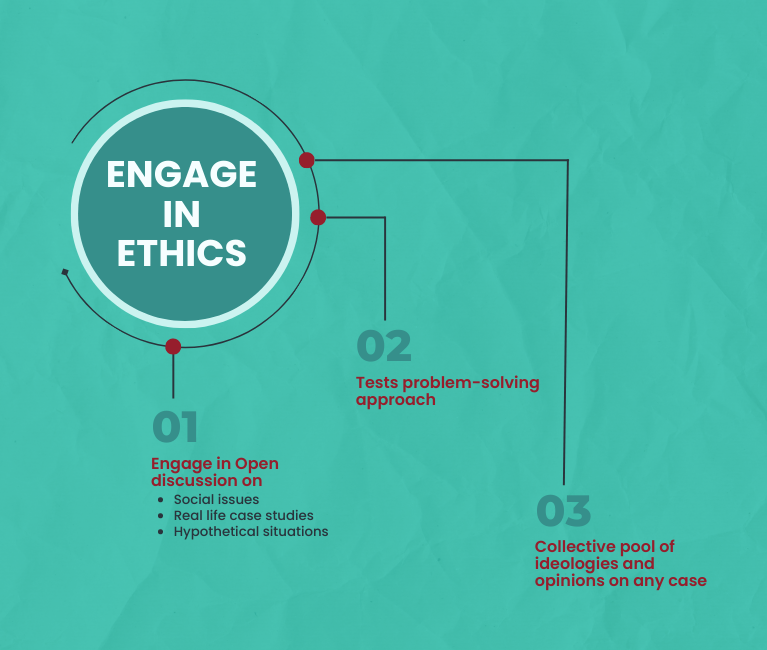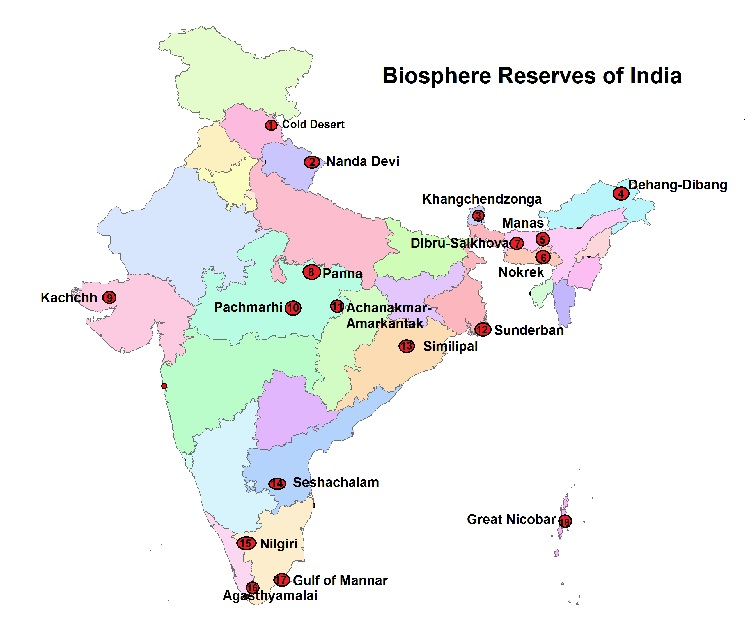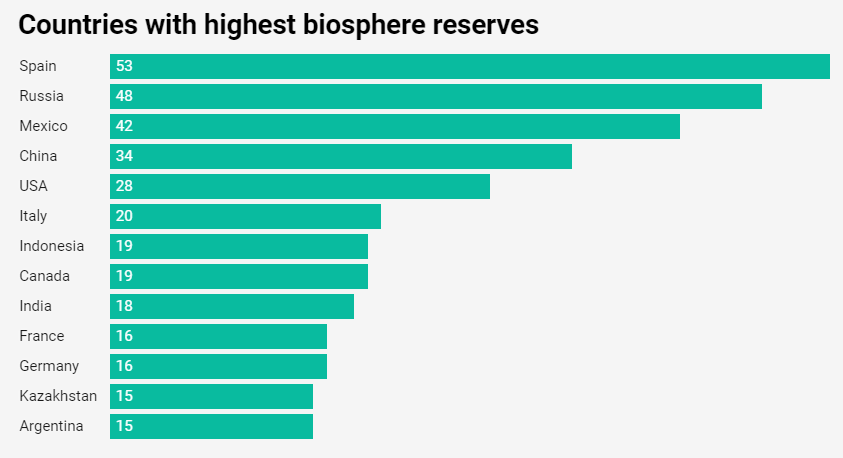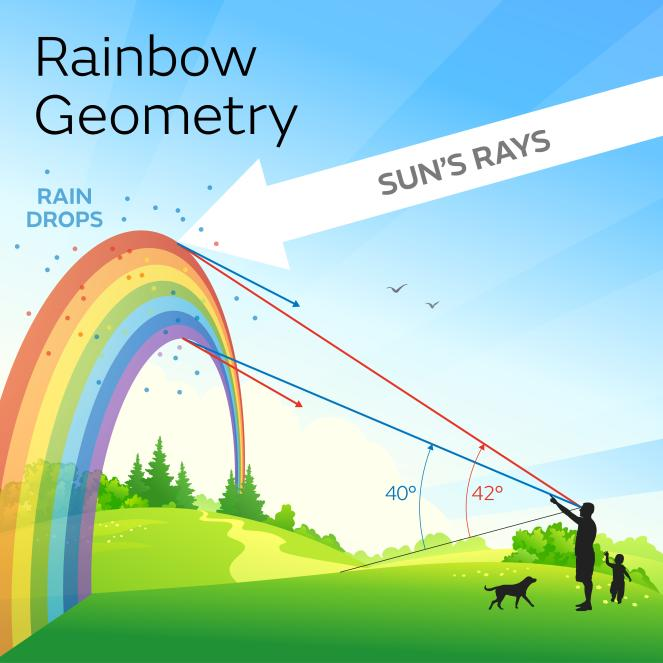Biodiversity & Environment
International Day for Biosphere Reserves
For Prelims: Biosphere Reserve, United Nations Educational, Scientific and Cultural Organization (UNESCO), Biosphere Reserves in India, Man and Biosphere Programme.
For Mains: Biosphere Reserves: Criteria for Designation, Main Zones, Functions, International Status.
Why in News?
From 2022 onwards, 3rd November will be celebrated as 'The International Day for Biosphere Reserves'.
What are Biosphere Reserves (BR)?
- About:
- BR is an international designation by (UNESCO) for representative parts of natural and cultural landscapes extending over large areas of terrestrial or coastal/marine ecosystems or a combination of both.
- BR tries to balance economic and social development and maintenance of associated cultural values along with the preservation of nature.
- BRs are nominated by national governments and remain under the sovereign jurisdiction of the states where they are located.
- These are designated under the intergovernmental Man and the Biosphere (MAB) Programme by the Director-General of UNESCO following the decisions of the MAB International Coordinating Council (MAB ICC).
- The MAB Programme is an intergovernmental scientific programme that aims to establish a scientific basis for enhancing the relationship between people and their environments.
- Their status is internationally recognized.
- Three Main Zones:
- Core Areas: It comprises a strictly protected zone that contributes to the conservation of landscapes, ecosystems, species and genetic variation.
- Buffer Zones: It surrounds or adjoins the core area(s), and is used for activities compatible with sound ecological practices that can reinforce scientific research, monitoring, training and education.
- Transition Area: The transition area is where communities foster socio-culturally and ecologically sustainable economic and human activities.
What is the Status of Biosphere Reserves in India/World?
- In India:
- India at present has 18 notified biosphere reserves spanning 60,000 sq km.
- The first biosphere reserve in India was the blue mountains of the Nilgiris stretching over Tamil Nadu, Karnataka and Kerala.
- The largest biosphere reserve is the Gulf of Kachchh (Gujarat) and the smallest is Dibru-Saikhowa (Assam).
- Other bigger biosphere reserves are the Gulf of Mannar (Tamil Nadu), Sunderbans (West Bengal), and Cold Desert (Himachal Pradesh).
- Around the World:
- About:
- There are 738 biosphere reserves in 134 countries, including 22 transboundary sites, according to UNESCO.
- Region-Wise:
- The highest number of reserves are in Europe and North America followed by Asia and the Pacific, Latin America and the Caribbean, Africa and Arab states.
- In South Asia, over 30 biosphere reserves have been established. The first one was the Hurulu Biosphere Reserve, in Sri Lanka, with 25,500 hectares of tropical dry evergreen forest.
- Bangladesh, Bhutan, and Nepal do not have biospheres as yet.
- Country-Wise:
- The highest number of such sites are in Spain, Russia and Mexico.
- World’s First 5-country Biosphere Reserve:
- Stretching across Austria, Slovenia, Croatia, Hungary and Serbia, the world’s first 5-country biosphere reserve, which has been declared by UNESCO in September 2021 covers 700 km of the Mura, Drava and Danube rivers.
- It is Europe's largest riverine protected area, covering almost 1 million hectares, and known as the 'Amazon of Europe'.
- About:
Way Forward
- Land rights of tribals which depend on the forest resources in transition areas must be secured.
- Munnar declaration which suggests that biosphere reserves can be carved out of the desert and Gangetic plain bio-geographic zones should also be implemented.
- As the biosphere reserve concept was aimed at sustainable development, the term, reserve, should be replaced with a suitable word.
- The government must take strict steps against alien species invading various biosphere reserves e.g., Nilgiri Biosphere Reserve.
UPSC Civil Services Examination, Previous Year Question
Q. Consider the following pairs: (2013)
- Nokrek Biosphere Reserve : Garo Hills
- Logtak (Loktak) Lake : Barail Range
- Namdapha National Park : Dafla Hills
Which of the above pairs is/are correctly matched?
(a) 1 only
(b) 2 and 3 only
(c) 1, 2 and 3
(d) None
Ans: (a)
Q. The most important strategy for the conservation of biodiversity together with traditional human life is the establishment of (2014)
(a) biosphere reserves
(b) botanical gardens
(c) national parks
(d) wildlife sanctuaries
Ans: (a)
Q. Out of all the Biosphere Reserves in India, four have been recognized on the World Network by UNESCO. Which one of the following is not one of them? (2008)
(a) Gulf of Mannar
(b) Kanchenjunga
(c) Nanda Devi
(d) Sunderbans
Ans: (b)
Source: TH

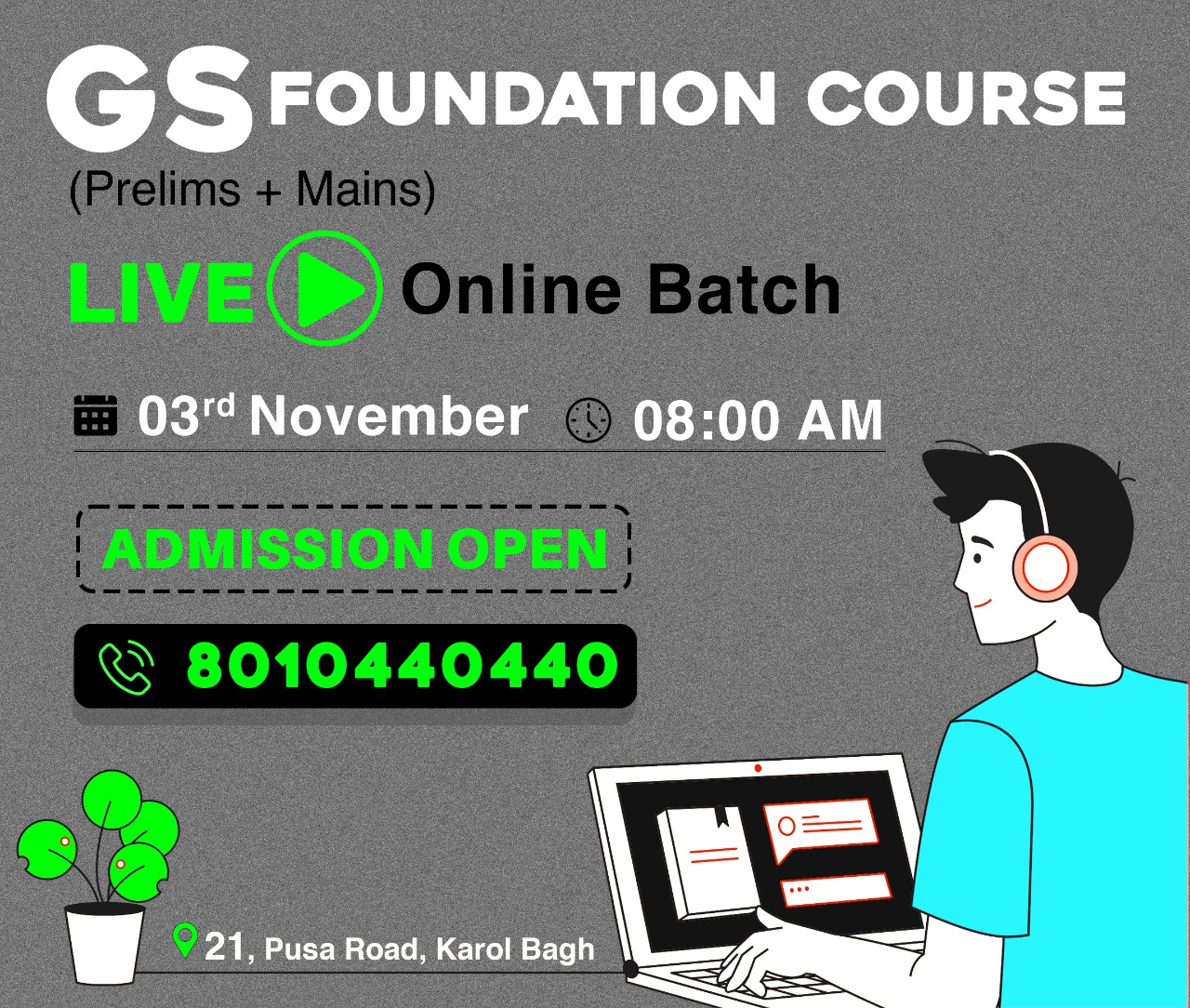
International Relations
India Abstains Russia’s UNSC Resolution on Bioweapons
For Prelims: Biological Weapon Convention, 1925 Geneva Protocol, UN Resolutions, Russia-Ukraine Conflict, Weapons of Mass Destruction (WMD).
For Mains: India’s stand on Russia-Ukraine Crisis, Biological Weapon Convention - Features and its Significance.
Why in News?
India has abstained from a UNSC resolution sponsored by Russia alleging US and Ukraine carrying out “military biological activities” violating the Biological Weapons Convention (BWC).
- Before this resolution, India recently abstained from another UNSC resolution, which sought to declare Russia’s annexation of four Ukrainian territories as invalid.
What is the Biological Weapon Convention?
- About Biological Weapons:
- Biological weapons use microbiological agents (such as bacteria, viruses or fungi) or toxins to intentionally cause death or harm to humans, animals, or plants.
- Biological Weapon Convention:
- About:
- Formally known as “The Convention on the Prohibition of the Development, Production and Stockpiling of Bacteriological (Biological) and Toxin Weapons and on their Destruction”, the Convention was negotiated by the Conference of the Committee on Disarmament in Geneva, Switzerland.
- It entered into force on 26th March 1975.
- Ambit:
- It effectively prohibits the development, production, acquisition, transfer, stockpiling and use of biological and toxin weapons.
- Significance:
- It is a key element in the international community’s efforts to address the proliferation of the Weapons of Mass Destruction (WMD).
- It was the first multilateral disarmament treaty banning an entire category of WMD.
- It supplements the 1925 Geneva Protocol, which prohibited only the use of biological (and chemical) weapons in war.
- The Geneva Protocol was signed at a conference held in Geneva under the auspices of the League of Nations.
- It entered into force in 1928.
- India has ratified this protocol.
- Members:
- The Convention has an almost universal membership with 184 States Parties and four Signatory States.
- India is a signatory of the convention.
- About:
What are UN Resolutions?
- About: The UN Resolutions and decisions are formal expressions of the opinion or will of UN organs.
- The nature of the resolution determines if it is considered binding on States.
- UNGA Resolutions: Articles 10 and 14 of the UN Charter refer to General Assembly resolutions as "recommendations".
- The recommendatory nature of UNGA resolutions has repeatedly been stressed by the International Court of Justice.
- However, some UNGA resolutions dealing with matters internal to the United Nations, such as budgetary decisions or instructions to lower-ranking organs, are clearly binding.
- UNSC Resolutions: In general, resolutions adopted by the UN Security Council acting under Chapter VII of the Charter, are considered binding, in accordance with Article 25 of the Charter.
- However, they are subject to veto exercised by permanent members of UNSC.
What has been India’s Stand on Previous UN Resolutions Involving Russia and Ukraine?
- India has abstained from the following UN Resolutions:
- US-sponsored UNSC resolution that deplored in the strongest terms Russia's aggression against Ukraine.
- Russia drafted UNSC resolution on the Humanitarian situation in Ukraine calling for a negotiated ceasefire for enabling safe, rapid, voluntary and unhindered evacuation of civilians.
- Resolution passed at the UN Human Rights Council to set up an international commission of enquiry into Russia’s actions in Ukraine.
- UNGA resolution that censured Russia for its military actions in Ukraine.
- There were 34 other nations that abstained from this resolution including China, Pakistan, Bangladesh and Sri Lanka, besides Central Asian and some African countries.
- International Atomic Energy Agency (IAEA) resolution related to safety at four nuclear power stations and a number of nuclear waste sites including Chernobyl, as the Russians seized control of them.
UPSC Civil Services Examination, Previous Year Questions (PYQs)
Prelims
Q. Recently, the USA decided to support India’s membership in multilateral export control regimes called the “Australia Group” and the “Wassenaar Arrangement”. What is the difference between them? (2011)
- The Australia Group is an informal arrangement which aims to allow exporting countries to minimize the risk of assisting chemical and biological weapons proliferation, whereas the Wassenaar Arrangement is a formal group under the OECD holding identical objectives.
- The Australia Group comprises predominantly of Asian, African and North American countries whereas the member countries of Wassenaar Arrangement are predominantly from the European Union and American Continents.
Which of the statements given above is/are correct?
(a) 1 only
(b) 2 only
(c) Both 1 and 2
(d) Neither 1 nor 2
Ans: (d)
Mains
Q. Discuss the impediments India is facing in its pursuit of a permanent seat in UN Security Council. (2015)
Source: IE
Governance
Remote Voting Facility
For Prelims: Remote Voting Facility, Blockchain Technology, Election Commission of India, Electronically Transmitted Postal Ballot System (ETPBS), e- SHRAM Portal
For Mains: Remote Voting Facility, Need for Remote Voting.
Why in News?
Recently, the Union government in the Supreme Court said it is considering Remote Voting Facility for Non-Resident Indians (NRI), especially migrant laborers, to cast their votes remotely while ensuring the integrity of the electoral process.
What is the Background?
- In 2020, the Election Commission officials proposed the idea of using blockchain technology to enable remote voting. The aim is to overcome the geographical hurdles in voting.
- The Commission has been considering the possibility of remote voting which will allow people to cast the ballot from their place of work.
- The Representation of the People (Amendment) Bill of 2017 had proposed the removal of an “unreasonable restriction” posed by Section 20A of the Representation of the People Act, 1951 requiring overseas electors to be physically present in their electoral constituencies to cast their votes.
- The Bill was later passed in 2018, but lapsed with the dissolution of the 16th Lok Sabha.
- Currently, only the following voters are allowed to cast their votes through postal ballot:
- Service voters (armed forces, the armed police force of a state and government servants posted abroad),
- Voters on election duty,
- Voters above 80 years of age or Persons with Disabilities (PwD),
- Voters under preventive detention.
What is Remote Voting?
- Remote voting may take place in person somewhere other than an assigned polling station or at another time, or votes may be sent by post or cast by an appointed proxy.
- There have been demands from various political parties that the EC should ensure that migrant workers, NRIs (Non-Resident Indians) who miss out on voting, as they cannot afford to go home during elections to exercise their franchise, should be allowed to vote for their constituency from the city they are working in.
Why is there a Need for Remote Voting?
- Unfavorable Conditions:
- Voters migrate from the place of their registration to cities and other places for education, employment and other purposes. It becomes difficult for them to return to their registered polling stations to cast their vote.
- It was also noted that in villages like Dumak and Kalgoth in Uttarakhand, about 20-25% of registered voters are unable to cast their vote in their constituencies as they are required to move out of their village/state broadly on account of their jobs or educational pursuits.
- Decrease in Voting Turnout:
- During the 2019 General elections, nearly 300 million citizens out of a total of 910 million electors didn’t cast their votes.
- Concerns Regarding Metropolitan Areas:
- The ECI also noted the concern about low voter turnout in some of the metropolitan/city areas despite the fact that polling stations are set up within 2 km for any voter in urban areas. The need to address voting apathy in urban areas was felt.
- Increasing Registrations of Unorganised Workers:
- There are nearly 10 million migrant workers, which is for the unorganised sector, registered with the government’s e-SHRAM portal. If the remote voting project is implemented, it will have far reaching ramifications.
- Health Concerns:
- The health concerns of mainly the senior citizens also need to be discussed as they’re also becoming the main deliberation. In this context, the remote voting facility will result in increasing the voting percentage in urban areas as well as in rural areas.
What are the Issues Related to Remote Voting?
- Security:
- Any new technology systems, including those based on blockchain technologies and others, are vulnerable to cyber-attacks and other security vulnerabilities.
- Technology-based voting systems may also entail privacy risks and concerns.
- Veracity and Verification:
- Furthermore, a voter verification system that uses biometric software, such as facial recognition, could lead to false positives or negatives in voter identification, thus facilitating fraud or disenfranchising citizens.
- Internet Connection & Malware Security:
- There is a dependency on voters having a reliable internet connection. Internet penetration and availability and use of e-government services in some countries are limited.
- Software errors or malware on voters’ devices may also affect vote casting.
- Privacy/Secrecy:
- Elections always require a high level of security in order to protect voter privacy and the integrity of final results. Meeting the security needs of elections means online voting technology must overcome barriers that can invade the voter’s privacy.
- Preferred Environment: It is also possible that voting takes place in an uncontrolled environment. It is difficult to ensure that the person votes freely and without coercion.
- There is the risk that another person votes on behalf of the voter so, it is difficult to identify the voter.
What is the Current Voting Process for NRIs?
- It was through the Representation of the People (Amendment) Act, 2010, eligible NRIs who had stayed abroad beyond six months were allowed to vote, but only in person at the polling station where they have been enrolled as an overseas elector.
- Prior to 2010, an Indian citizen who is an eligible voter and was residing abroad for more than six months, would not have been able to vote in elections. This was because the NRI’s name was deleted from electoral rolls if he or she stayed outside the country for more than six months at a stretch.
- An NRI can vote in the constituency in which his/her place of residence, as mentioned in the passport, is located.
- He/She can only vote in person and will have to produce her passport in original at the polling station for establishing identity.
Way Forward
- An online voting system must be able to provide verification that it has successfully maintained election integrity and that no manipulation had occurred during the voting or tallying processes.
- It is important that any system of remote voting has to take into account the confidence and acceptability of all the stakeholders of the electoral system – voters, political parties and election machinery, the officials are learnt to have informed the committee while political consensus is the way forward to introduce remote voting.
- Even with all of the proper legal frameworks in place, using an online voting system would be pointless if the government or general public were not confident in its security, integrity, and accuracy.
- A postal ballot mechanism that allows for proper authentication of the ballot at designated consular/embassy offices and an effective postal system should ease this process for NRIs, but rules must be clearly framed for eligibility on the basis of time spent away from the country.
UPSC Civil Services Examination Previous Year Question
Prelims
Q. Right to vote and to be elected in India is a (2017)
(a) Fundamental Right
(b) Natural Right
(c) Constitutional Right
(d) Legal Right
Ans: (c)
Exp:
- Right to Vote is implicit in Article 326 of the Constitution, which states that the elections to the House of the People and to the Legislative Assembly of every State shall be on the basis of adult suffrage. Every person who is a citizen of India and who is not less than eighteen years of age and not disqualified under the Constitution or any law made by the appropriate Legislature on the ground of nonresidence, unsoundness of mind, crime or corrupt or illegal practice, shall be entitled to be registered as a voter at any such election.
- Right to be elected is implicit in the Constitution in a way that it provides for the minimum qualifications required to be the Member of Parliament (Article 84), Member of State Legislatures (Article 173), President and Vice-President. Article 84 provides that a citizen of India who is not less than thirty years of age is eligible to fill a seat in the Council of State (Rajya Sabha) and a person who is not less than twenty-five years of age is eligible to fill the seat in the House of the People (Lok Sabha).
- Therefore, option (c) is the correct answer.
Mains
Q. “There is a need for simplification of procedure for disqualification of persons found guilty of corrupt practices under the Representation of Peoples Act”. Comment. (2020)
Source: TH

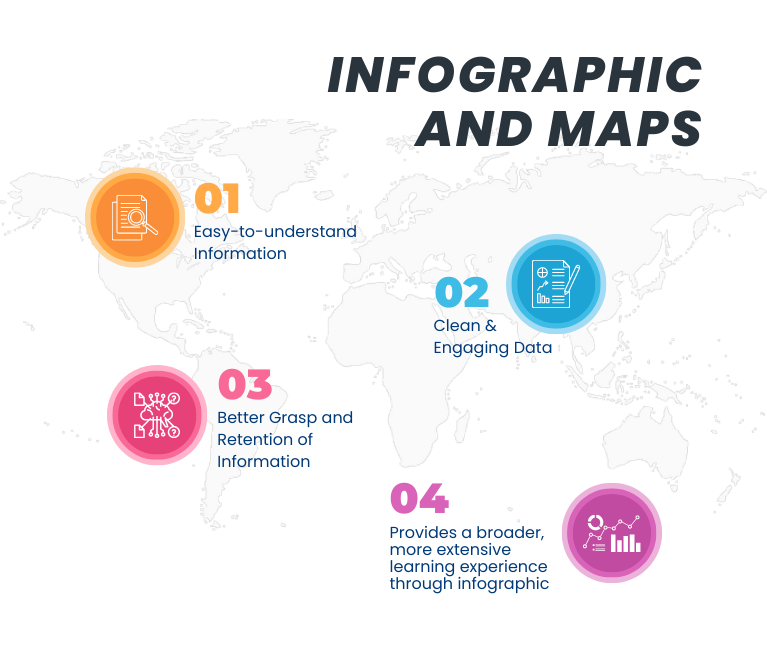
Governance
Pahari Tribe in the ST list of J&K
For Prelims: National Commission for Scheduled Tribes, Scheduled Tribe, TRIFED, Digital Transformation of Tribal Schools.
For Mains: Issues Related to SCs & STs.
Why in News?
The National Commission for Scheduled Tribes (NCST) has now cleared the way for the inclusion of the ‘Pahari ethnic group’ in the Scheduled Tribes (ST) list of the Union Territory of Jammu and Kashmir.
- The commission also called for the inclusion of the “Paddari tribe”, “Koli” and “Gadda Brahman” communities to be included in the ST list of J&K.
- Currently, Jammu and Kashmir has 12 communities that have been notified as STs.
What is the Process of Inclusion in the ST List?
- The process to include tribes in the ST list begins with the recommendation from the respective State governments, which are then sent to the Tribal Affairs Ministry, which reviews and sends them to the Registrar General of India for approval.
- This is followed by the NCST approval before the list is sent to the Cabinet for a final decision.
- The final decision rests with the President’s office issuing a notification specifying the changes under powers vested in it from Articles 342.
- The inclusion of any community in the Scheduled Tribes come into effect only after the President assents to a Bill that amends the Constitution (Scheduled Tribes) Order, 1950, as is appropriate, after it is passed by both the Lok Sabha and Rajya Sabha.
What will be the Benefits in the Inclusion in the ST List?
- Enables members of the communities newly listed in the revised list of Scheduled Tribes to derive benefits meant for STs under the existing schemes of the government.
- Some of the major benefits include post-matric scholarship, overseas scholarship and the national fellowship, besides education, concessional loans from the National Scheduled Tribes Finance and Development Corporation, and hostels for students.
- In addition, the tribes will also be entitled to benefits of reservation in services and admission to educational institutions as per the government policy.
What are the Constitutional Provisions and Initiatives related to Tribes in India?
- Constitutional Provisions:
- As per Census-1931, Schedule tribes are termed as "backward tribes” living in the "Excluded" and "Partially Excluded" areas. The Government of India Act of 1935 called for the first time for representatives of "backward tribes" in provincial assemblies.
- The Constitution does not define the criteria for recognition of Scheduled Tribes and hence the definition contained in 1931 Census was used in the initial years after independence.
- However, Article 366(25) of the Constitution only provides process to define Scheduled Tribes: “Scheduled Tribes means such tribes or tribal communities or parts of or groups within such tribes or tribal communities as are deemed under Article 342 to be Scheduled Tribes for the purposes of this Constitution.”
- 342(1): The President may with respect to any State or Union Territory, and where it is a State, after consultation with the Governor, by a public notification, specify the tribes or tribal communities or part of or groups within tribes or tribal communities as Scheduled Tribe in relation to that State or Union Territory.
- The Fifth Schedule of the Constitution lays out provision for Administration and Control of Scheduled Areas and Scheduled Tribes in states other than Assam, Meghalaya, Tripura and Mizoram.
- The Sixth Schedule deals with the administration of the tribal areas in Assam, Meghalaya, Tripura and Mizoram.
- Legal Provisions:
- Protection of Civil Rights Act, 1955 against Untouchability.
- Scheduled Castes and the Scheduled Tribes (Prevention of Atrocities) Act, 1989.
- Provisions of the Panchayats (Extension to the Scheduled Areas) Act, 1996.
- Scheduled Tribes and Other Traditional Forest Dwellers (Recognition of Forest Rights) Act, 2006.
- Related Initiatives:
- Related Committees:
- Xaxa Committee (2013)
- Bhuria Commission (2002-2004)
- Lokur Committee (1965)
UPSC Civil Services Examination Previous Year Question
Prelims
Q. If a particular area is brought under the Fifth Schedule of the Constitution of India, which one of the following statements best reflects the consequence of it? (2022)
(a) This would prevent the transfer of land of tribal people to non-tribal people.
(b) This would create a local self-governing body in that area.
(c) This would convert that area into a Union Territory.
(d) The State having such areas would be declared a Special Category State.
Ans: (a)
Q. Under which Schedule of the Constitution of India can the transfer of tribal land to private parties for mining be declared null and void? (2019)
(a) Third Schedule
(b) Fifth Schedule
(c) Ninth Schedule
(d) Twelfth Schedule
Ans: (b)
Mains
Q. What are the two major legal initiatives by the State since Independence addressing discrimination against Scheduled Tribes (STs)? (2017)
Source: TH


Indian Polity
Criminalisation of Politics
For Prelims: Representation of People's Act, Criminalization of Politics.
For Mains: Reasons, effects and solutions to Criminalization of Politics.
Why in News?
Recently, two Uttar Pradesh legislators were convicted on criminal charges in recent days, but only one of them has been disqualified and his seat declared vacant by the State’s Legislative Assembly secretariat.
What is Criminalisation of Politics?
- About:
- The criminalization of politics means the participation of criminals in politics which includes that criminals can contest in the elections and get elected as members of the Parliament and the State legislature.
- It takes place primarily due to the nexus between politicians and criminals.
- Legal Aspects of Disqualification of Criminal Candidates:
- In this regard, Indian Constitution does not specify as to what disqualifies a person from contesting elections for the Parliament, Legislative assembly or any other legislature.
- The Representation of Peoples Act (RPA) 1951 mentions the criteria for disqualifying a person for contesting an election of the legislature.
- Section 8 of the act, i.e., disqualification on conviction for certain offences, according to which an individual punished with a jail term of more than two years cannot stand in an election for six years after the jail term has ended.
- Protection against Disqualification:
- Under Section 8(4) of the RPA, legislators could avoid immediate disqualification until 2013.
- Members of Parliament or state legislators will not be disqualified for three months, according to the provision.
- If within that period, the it will not take effect until the disposal of the appeal or application.
- In Lily Thomas vs. Union of India, 2013, the Supreme Court struck down clause (4) as unconstitutional, thus removing the protection enjoyed by lawmakers.
- Under Section 8(4) of the RPA, legislators could avoid immediate disqualification until 2013.
- Related Supreme Court’s Power:
- The Supreme Court has the power to stay not only the sentence, but also the conviction of a person. In some rare cases, conviction has been stayed to enable the appellant to contest an election.
- However, the SC has made it clear that such a stay should be very rare and for special reasons. The RPA itself provides a remedy through the Election Commission (EC). Under Sec. 11 of the Act, the EC may record reasons and either remove or reduce the period of, a person’s disqualification.
What are the Reasons for Criminalization of Politics?
- Lack of Enforcement: Several laws and court judgments have not helped much, due to the lack of enforcement of laws and judgments.
- Vested Interests: Publishing of the entire criminal history of candidates fielded by political parties may not be very effective, as a major chunk of voters tend to vote through a narrow prism of community interests like caste or religion.
- Use of Muscle and Money Power: Candidates with serious records seem to do well despite their public image, largely due to their ability to finance their own elections and bring substantive resources to their respective parties.
- Also, sometimes voters are left with no options, as all competing candidates have criminal records.
What are the Effects of Criminalization of Politics?
- Against the Principle of Free and Fair Election: It limits the choice of voters to elect a suitable candidate.
- It is against the ethos of free and fair election which is the bedrock of a democracy.
- Affecting Good Governance: The major problem is that the law-breakers become law-makers, this affects the efficacy of the democratic process in delivering good governance.
- These unhealthy tendencies in the democratic system reflect a poor image of the nature of India’s state institutions and the quality of its elected representatives.
- Affecting Integrity of Public Servants: It also leads to increased circulation of black money during and after elections, which in turn increases corruption in society and affects the working of public servants.
- Causes Social Disharmony: It introduces a culture of violence in society and sets a bad precedent for the youth to follow and reduces people's faith in democracy as a system of governance.
Way Forward
- State Funding of Elections: Various committees (Dinesh Goswami, Inderjeet Committee) on the electoral reforms have recommended state funding of elections which will curb use of black money to a large extent and thereby will have a significant impact on limiting criminalization of politics.
- Strengthening Election Commission: Regulating the affairs of a political party is essential for a cleaner electoral process. Therefore, it is imperative to strengthen the Election Commission of India.
- Vigilant Voters: Voters also need to be vigilant about misuse of money, gifts and other inducements during elections.
- Proactive Role of Judiciary: Given the reluctance by the political parties to curb criminalisation of politics and its growing detrimental effects on Indian democracy, Indian courts must now seriously consider banning people accused with serious criminal charges from contesting elections.
UPSC Civil Services Examination, Previous Year Questions (PYQs)
Q. It is often said that ‘politics’ and ‘ethics’ do not go together. What is your opinion in this regard? Justify your answer with illustrations. (2013)
Q. Discuss the procedures to decide the disputes arising out of the election of a Member of the Parliament or State Legislature under The Representation of the People Act, 1951. What are the grounds on which the election of any returned candidate may be declared void? What remedy is available to the aggrieved party against the decision? Refer to the case laws. (2022)
Source: TH
Biodiversity & Environment
Rainbow & Climate Change
For Prelims: Rainbow Formation
For Mains: Rainbow Formation and it’s linkage with Climate Change
Why in News?
Recently, a research has found out that the changes in cloud cover and liquid precipitation due to increased greenhouse gas emissions are projected to lead to a net increase in mean global annual rainbow days.
- Mean days of rainbows are expected to go up globally by 4.0–4.9% in a year by 2100.
What has the Study Revealed about Rainbows?
- Areas with Lesser Rainbows:
- Around 21–34% of land areas will lose rainbow days.
- Areas that will lose rainbow days are projected to have lower total precipitation by 2100, except those in Central Africa, Madagascar and central South America.
- All are projected to have more annual dry days and less total annual cloud cover.
- Areas with Higher Rainbows:
- Around 66–79% will gain rainbow days under higher emission futures.
- India is one of the countries where the number of rainbow days will increase.
- African countries like Mali, Niger, Chad, Sudan and Ethiopia are also likely to experience more rainbow days.
- Rainbow gain hotspots are mostly located at higher latitudes or at very high elevations, like the Tibetan Plateau, where warming is predicted to lead to less snow and more rain.
- Two rainbow gain hotspots namely, eastern Borneo and northern Japan, will see overall precipitation increase but more dry days per year.
How is Rainbow & Climate Change Inter-related?
- About:
-
- A rainbow is a common atmospheric optical phenomenon. It is a multicoloured arc in the sky that results when water droplets refract sunlight.
- When sunlight hits a rain droplet, some of the light is reflected. The electromagnetic spectrum is made of light with many different wavelengths, and each is reflected at a different angle. Thus, spectrum is separated, producing a rainbow.
- Rainbows can also be viewed around fog, sea spray, or waterfalls.
- It is an optical illusion; it does not actually exist in a specific spot in the sky.
- Rainbows are the result of the refraction and reflection of light.
- Both refraction and reflection are phenomena that involve a change in a wave's direction.
- A refracted wave may appear "bent", while a reflected wave might seem to "bounce back" from a surface or other wavefront.
- The colors on a primary rainbow are always in order of their wavelength, from longest to shortest: red, orange, yellow, green, blue, indigo and violet.
- A rainbow is a common atmospheric optical phenomenon. It is a multicoloured arc in the sky that results when water droplets refract sunlight.
- Linkage with Climate Change:
- Human activities such as burning fossil fuels are warming the atmosphere, which changes patterns and amounts of rainfall and cloud cover.
- Climate change will alter the distribution of rainbow occurrence by affecting evaporation and convergence of moisture.
- This alters patterns of precipitation and cloud cover.
UPSC Civil Services Examination Previous Year Question
Q. Rainbow is produced when sunlight falls on drops of rain. Which of the following physical phenomena are responsible for this? (2013)
- Dispersion
- Refraction
- Internal reflection
Select the correct answer using the codes given below:
(a) 1 and 2 only
(b) 2 and 3 only
(c) 1 and 3 only
(d) 1, 2 and 3
Ans: (d)
Exp:
- A rainbow is a meteorological phenomenon that is caused by reflection, refraction and dispersion of light by water droplets resulting in a spectrum of light appearing in the sky.
- It is a natural spectrum appearing in the sky after a rain shower. It is caused by dispersion of sunlight by tiny water droplets, present in the atmosphere.
- Rainbow is always formed in a direction opposite to that of the Sun. The water droplets act like small prism. They refract and disperse the incident sunlight, then reflect it internally, and finally refract it again when it comes out of the raindrop. Due to the dispersion of light and internal reflection, different colours reach the observer’s eyes. Hence, 1, 2 and 3 are correct.
- Therefore, option (d) is the correct answer.
Source: DTE

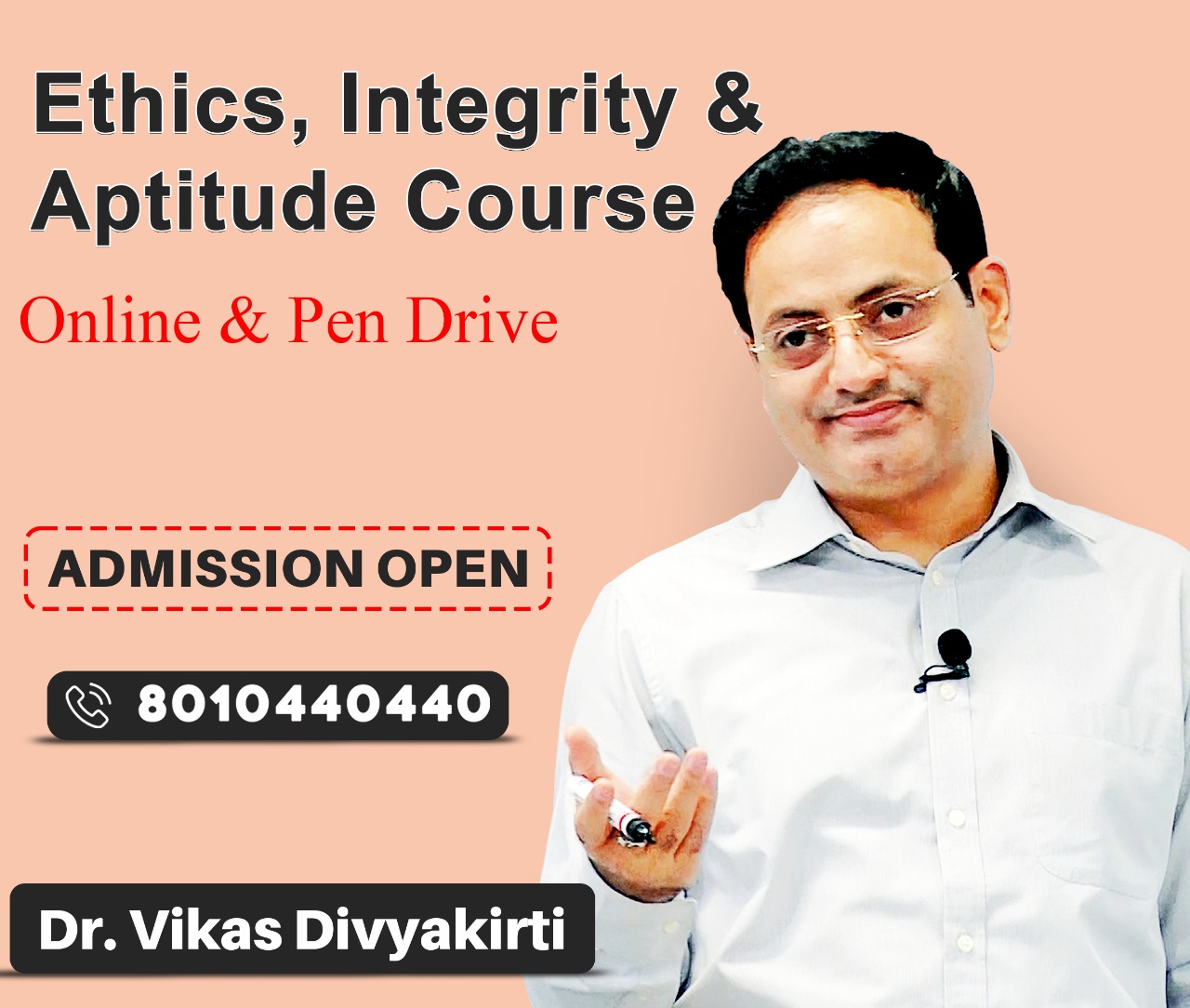
Important Facts For Prelims
Cordy Gold Nanoparticles
Why in News?
Recently, scientists from four Indian institutions, including Bodoland University, have developed Cordy Gold Nanoparticles (Cor-AuNPs), which can make drug delivery in the human body faster and surer.
- These nanoparticles have received an international patent from Germany.
What are Cordy Gold Nanoparticles (Cor-AuNPs)?
- About:
- They are derived from the synthesis of the extracts of Cordyceps Mlitaris and Gold Salts.
- Cordyceps militaris is a high value parasitic fungus, lab-grown at the Department of Biotechnology’s Technology Incubation Centre (TIC) in Bodoland University.
- Wild Cordyceps mushroom are found in the eastern Himalayan belt.
- Gold salts are ionic chemical compounds of gold generally used in medicine.
- Cordyceps militaris is a high value parasitic fungus, lab-grown at the Department of Biotechnology’s Technology Incubation Centre (TIC) in Bodoland University.
- They are derived from the synthesis of the extracts of Cordyceps Mlitaris and Gold Salts.
- Benefit:
- Penetration in the cells is more when the drug particles are smaller.
- Cordyceps militaris, called super mushroom because of its tremendous medicinal properties, adds bioactive components to the synthesis of gold nanoparticles for better penetration.
- Biosynthesized nanogold particles indicate a new application of nanoparticles in the development of therapeutic drugs which can be delivered as ointments, tablets, capsules, and in other forms.
- Penetration in the cells is more when the drug particles are smaller.
UPSC Civil Services Examination Previous Year Question
Q. With reference to "Gucchi" sometimes mentioned in the news, consider the following statements: (2022)
- It is a fungus.
- It grows in some Himalayan forest areas.
- It is commercially cultivated in the Himalayan foothills of north-eastern India.
Which of the statements given above is/are correct?
(a) 1 only
(b) 3 only
(c) 1 and 2
(d) 2 and 3
Ans: (c)
Exp:
- Guchhi mushroom is a species of fungus in the family Morchellaceae of the Ascomycota. They are pale yellow in colour. This cannot be cultivated commercially and grown in the foothills in Himachal Pradesh, Uttaranchal, and Jammu and Kashmir. Hence, option (c) is correct.
Source: TH

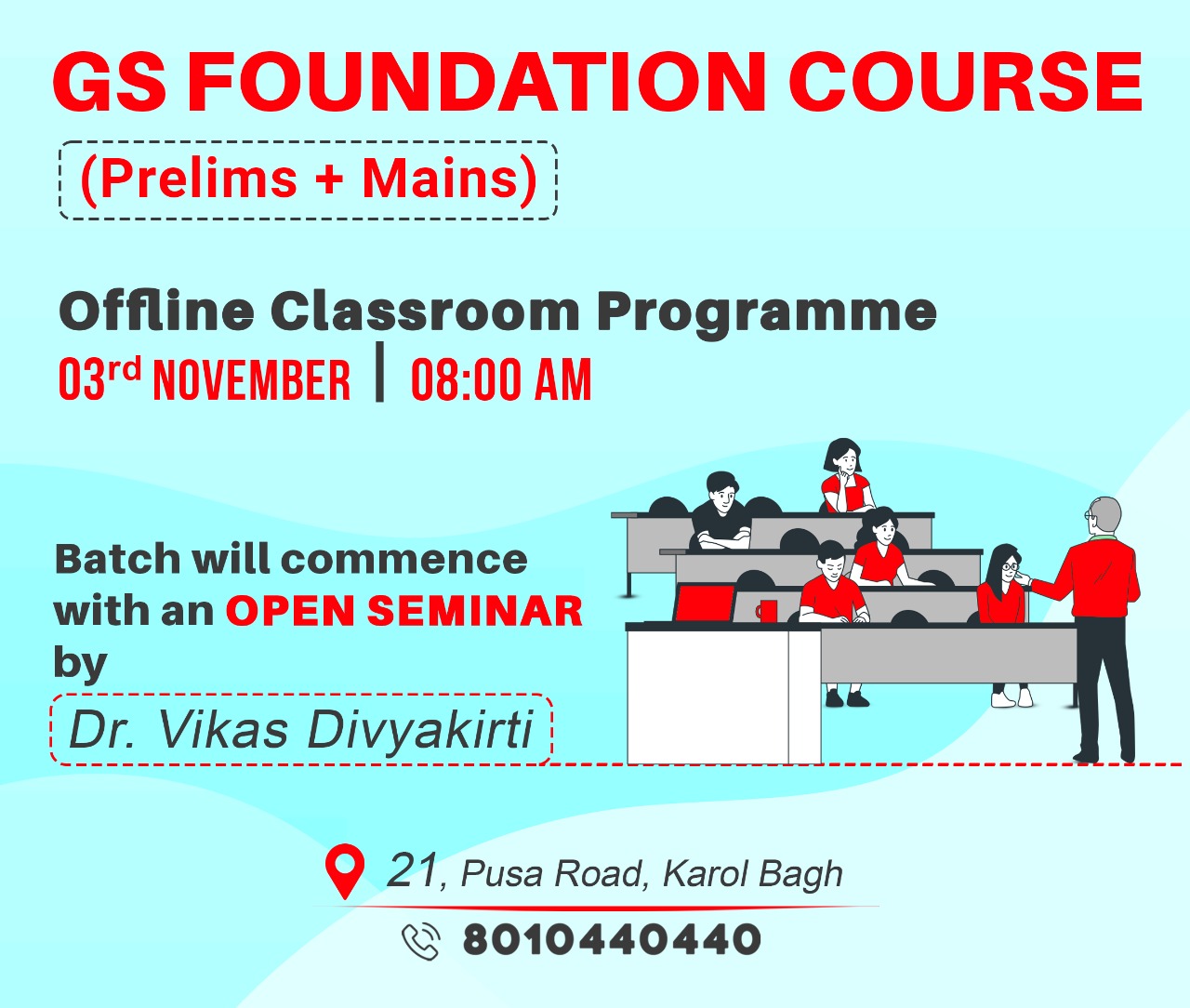
Important Facts For Prelims
India Chem 2022
Why in News?
Recently, 12th Biennial International Exhibition and Conference India Chem 2022 was inaugurated at Pragati Maidan, New Delhi.
- The theme for India Chem 2022 is “Vision 2030: Chemicals and Petrochemicals Build India”.
What is the Status of Chemical Industry in India?
- India’s chemical industry is extremely diversified and can be broadly classified into bulk chemicals, specialty chemicals, agrochemicals, petrochemicals, polymers and fertilisers.
- Globally, India is the fourth-largest producer of agrochemicals after the United States, Japan and China.
- India is the sixth-largest producer of chemicals in the world.
- India is the second-largest manufacturer and exporter of dyes and accounts for ~16% of the world's production.
- The country’s chemicals industry is de-licensed, except for few hazardous chemicals.
- India holds a strong position in exports and imports of chemicals at a global level and ranks 14th in exports and 8th in imports at global level (excluding pharmaceuticals).
What are the Related Government Initiatives?
- Under the Union Budget 2022-23, the government allocated Rs. 209 crores to the Department of Chemicals and Petrochemicals.
- Production linked incentive (PLI) Schemes have been introduced to promote Bulk Drug Parks.
- The government plans to implement PLI system with 10-20% output incentives for the agrochemical sector; to create an end-to-end manufacturing ecosystem through the growth of clusters.
- A 2034 vision for the chemicals and petrochemicals sector has been set up by the government to explore opportunities to improve domestic production, reduce imports and attract investments in the sector.
Source: PIB
Important Facts For Prelims
World Puzzle Championship
Why in News?
Prasanna Seshadri has won India's first silver medal after 11 years of trying at the World Puzzle Championship (WPC).
- The WPC gold this year went to Japan’s Ken Endo.
What is the World Puzzle Championship?
- The World Puzzle Championship is an annual international puzzle competition run by the World Puzzle Federation. All the puzzles in the competition are pure-logic problems based on simple principles, designed to be playable regardless of language or culture.
- The World Puzzle Federation is an association of legal bodies with an interest in puzzles. Only one organization per country can belong to the WPF.
Source: IE

